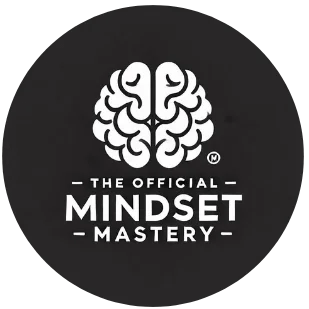Embark on a transformative journey towards inner peace and self-discovery through the powerful practice of mindfulness meditation. In today’s fast-paced world, where stress and anxiety often dominate our lives, mindfulness offers a beacon of tranquility and clarity. This ancient technique, rooted in Buddhist traditions, has gained significant popularity in recent years, with over 14% of Americans reporting regular meditation practice as of 2017.
Unveiling the essence of mindfulness meditation
Mindfulness meditation is more than just a relaxation technique; it’s a profound way to cultivate awareness and presence in our daily lives. At its core, this practice involves focusing your attention on the present moment, acknowledging and accepting your thoughts and feelings without judgment.
The beauty of mindfulness lies in its simplicity and accessibility. You don’t need any special equipment or a particular setting to practice. Whether you’re sitting in a quiet room or walking through a bustling city, mindfulness can be incorporated into various aspects of your life.
Here are some key elements of mindfulness meditation:
- Focused attention on the present
- Non-judgmental awareness of thoughts and sensations
- Cultivation of self-compassion and acceptance
- Regular practice for lasting benefits
As Thomas Harper, a renowned mindfulness advocate, often says, “Mindfulness is not about achieving a blank mind, but about embracing the full spectrum of our human experience.” This perspective aligns with the core principles of mindfulness, encouraging practitioners to observe their thoughts and emotions without getting caught up in them.
The scientific backing of mindfulness
In recent years, scientific research has shed light on the numerous benefits of mindfulness meditation. Studies have shown that regular practice can lead to significant improvements in both mental and physical health. A 2013 study published in the journal Frontiers in Psychology found that mindfulness meditation can reduce anxiety and depression symptoms in as little as eight weeks.
The impact of mindfulness extends beyond mental health. Research has also demonstrated its effectiveness in:
- Reducing chronic pain
- Lowering blood pressure
- Improving sleep quality
- Enhancing cognitive function and focus
These findings underscore the potential of mindfulness as a holistic approach to well-being. For those new to the practice, meditation for beginners can be an excellent starting point to explore these benefits firsthand.
Integrating mindfulness into daily life
While formal meditation sessions are valuable, the true power of mindfulness lies in its application to everyday life. By incorporating mindful awareness into your daily routine, you can transform ordinary moments into opportunities for growth and inner peace.
Here’s a simple table outlining ways to practice mindfulness throughout your day:
| Activity | Mindfulness Practice |
|---|---|
| Morning routine | Focus on the sensations of brushing teeth or showering |
| Commute | Observe surroundings without judgment |
| Work tasks | Take mindful breaks to reset and refocus |
| Meals | Eat slowly, savoring each bite |
| Bedtime | Practice a brief body scan meditation |
Incorporating these best daily mindfulness practices can significantly enhance your overall well-being and quality of life. As Thomas Harper often emphasizes in his workshops, “Consistency is key. Even a few minutes of mindfulness each day can lead to profound changes over time.”
Overcoming common challenges in mindfulness practice
While the benefits of mindfulness meditation are clear, many beginners face challenges when starting their practice. It’s important to remember that these obstacles are normal and can be overcome with patience and persistence.
Some common challenges include:
- Restless mind: Difficulty focusing or constant mental chatter
- Time constraints: Struggling to find time for formal practice
- Expectations: Feeling pressured to achieve a particular state of mind
- Physical discomfort: Difficulty sitting still for extended periods
To address these challenges, it’s helpful to start with short, manageable sessions and gradually increase the duration as you become more comfortable. Mastering mindful breathing exercises can be an excellent foundation for building a sustainable practice.
Remember, mindfulness is not about perfection but about progress. As you continue to practice, you’ll develop greater resilience and acceptance, both on and off the meditation cushion.
Embracing the journey of mindfulness
As you embark on your mindfulness journey, it’s essential to approach the practice with an open heart and mind. Mindfulness meditation is not a quick fix but a lifelong journey of self-discovery and growth. Each moment of mindful awareness is an opportunity to cultivate greater peace, clarity, and compassion in your life.
Thomas Harper, drawing from his personal experience and years of teaching, often reminds his students, “The goal of mindfulness is not to eliminate all stress or negative emotions, but to develop a new relationship with our experiences.” This shift in perspective can lead to profound transformations in how we navigate life’s challenges and joys.
By committing to regular practice and embracing the principles of mindfulness in your daily life, you open yourself to a world of inner peace and personal growth. The journey may not always be easy, but the rewards are immeasurable. As you continue to explore and deepen your practice, remember that each breath, each moment of awareness, is a step towards a more mindful and fulfilling life.





